Zanzibar
General
Semi-autonomous island, part of Tanzania, with direct elections to a National Assembly. Politics on the island has been occasionally violent, with relative peace since 2010. Currently has a government of national unity.
The island is about 85 kilometres long and 35 kms wide, mainly low lying, with beautiful sandy beaches and a good number of coral reefs. Its status has been compared to that of Hong Kong. It’s 34 kilometres long and 23 wide, population 280,000, in the Indian Ocean on the Swahili Coast. Population 1.3 million, mainly Islamic.
Strictly speaking, Zanzibar is an archipelago, with many small islands and two large ones: Unguja (informally also known as Zanzibar) and Pemba. These islands have a long history, growing cloves, nutmeg, cinnamon, and black pepper (hence their name - the Spice Islands) - and operating as the centre of the slave trade on the east African coast. The capital, Zanzibar City, contains the historic centre Stone Town, which is a Unesco World Heritage Site.
Languages: Kiswahili, English, Arabic.
Sunshine: Seven or eight hours of sunshine all year round.
Currency: Tanzanian shilling
2950 TZS = £1. 2618 TZS= €1 2251 TZS = US$ 1
Flight time London to Zanzibar City: 9 hrs 42 min.
Time in Zanzibar: UTC + 3.00
Entry requirements: valid passport, return ticket. You may need to prove that you have a Yellow Fever injection - better check this one.
Visas? Yes, for most countries. EU countries and USA need a visa, which you can get from the Diplomatic or Consulate Mission in your country. http://www.tanzaniaconsul.com/visa.html.
(written November 2017)
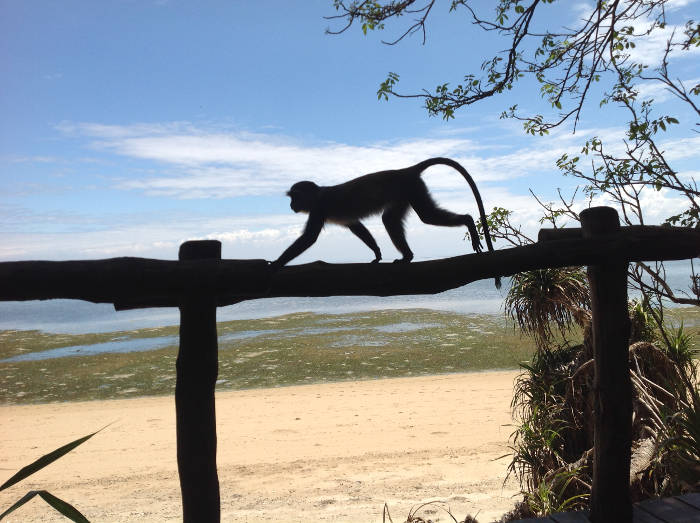
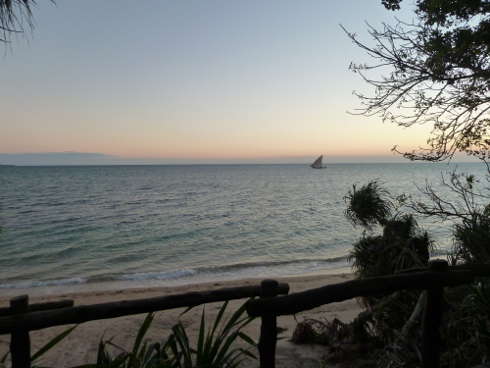
Climate charts
Being near to the equator, Zanzibar has holiday weather for most of the year, with 7 to 8 hours of sunshine every day. Officially, summer peaks in December and winter in June. The long rains usually occur in April and May, although it doesn't rain every day.
Generally, it's hot. Take your sun cream.
Sea temperature - 26°C to 29°C all year round (that’s warm).
More information - http://zanzibar.net/weather_climate/
http://www.weatherbase.com/weather/weather.php3?s=7836&refer=wikipedia
https://www.seatemperature.org/africa/tanzania/zanzibar-january.htm
General
There is some magnificent snorkelling round this island, with a good deal of choice as to where to go. Some places have a very large tidal drop, which means you can snorkel when it's high tide but not when the tide goes out. If you look at the photo of the monkey above, the tide is about one-third of the way out behind it.That's OK, provided you don't mind staggering your snorkel times to suit the tide.
Also, choose your month carefully, to avoid the hot season and the rainy season. There are extremes of temperature here. We chose October because the days are 25 to 30 degrees and the nights are 22 to 24.
October 2013 visit
We stayed in Fumba Beach Lodge, on the southwest tip of the island, in the Marine Nature Reserve. Like much of Zanzibar, it's flat and tidal, so you can snorkel at high tide but not when the tide goes out about 400 metres, and the local people wade the the sharp-floored shallows to collect cockles. They take their children, and sing while they are picking. Herons, whimbrels and crab plovers take advantage of the shallow water to pick up some breakfast.
It's a beautiful part of the world. with stunning wildlife and great scenery. Snorkelling off the beach was not very remarkable - it's a beach, so you don't get to see much in the way of sea life. The hotel is aware of this, though, and arranges trips out.
There are a number of places to visit in Zanzibar, including the capital, Stone Town (the historic part of Zanzibar Town), and the Mahurubi palace, just north of Stone Town, where the local fishermen dry out all their fish. The spice farms lay on really interesting tours, and they are worth a visit - but there is great snorkelling here too.
The local dive centre is based in the hotel, (it was called Blue Flag Diving, now seems to be Fumba Beach Dive Centre ) and organises snorkel trips and picnic days out. The local Menai Bay Conservation area is a protected Marine Reserve.
On the first day we went out in a dhow to Umchungha Reef, seven kilometres and half an hour (US$50 per person). The boat crew drop you off with a snorkel guide and you follow the current until you get tired. We stayed in the water (28 degrees) for ninety minutes until we had enough. The snorkelling was stunning, over varied undisturbed corals with 20 metre visibility. Fish similar to the Red Sea with some differences.
There was a huge variety of fish. We've listed them in the green panel on the right.
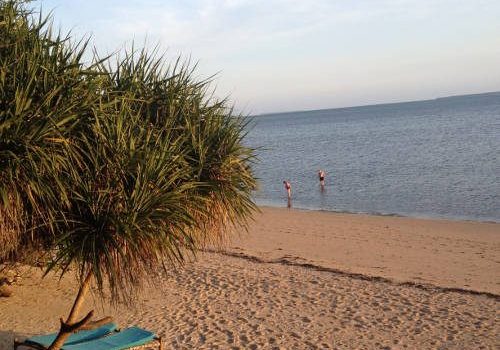
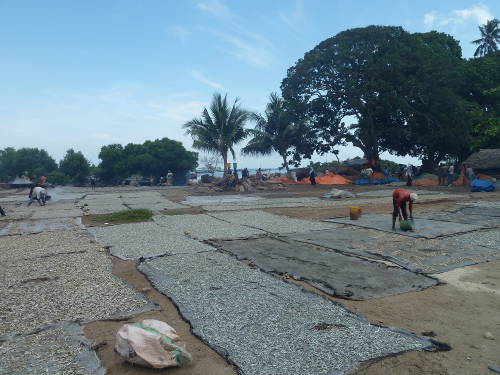
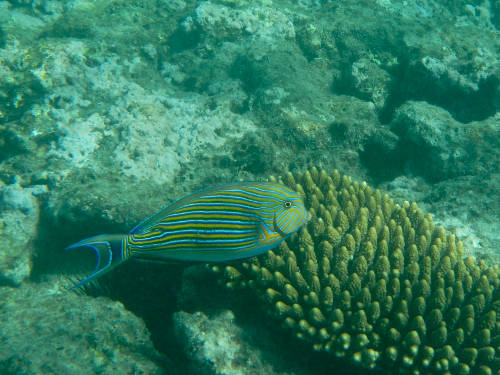
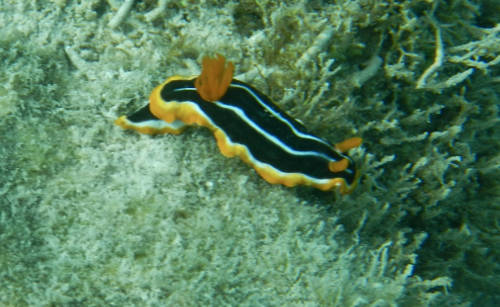
This is a bit nerdy, but we were in list mode at the time. What we saw included:
Moorish idols Sergeant Majors Scissortail sergeant
Half and half chromis (aka two tone chromis, aka chocolate dip chromis)
Olive Ridley turtle Red starfish Blue starfish
Immature damselfish Cleaner wrasse Indian Ocean bird wrasse
Two bar anenome fish Alligator pipefish Black beauty (new for us)
Sulphur damsel Sapphire damsel Black brittle star starfish
Bird wrasse Domino Red Soldierfish
There was a wide variety of coral species and colours, usually up to three metres but occasionally falling off in a sea wall.
Spiral black coral Table coral Slipper coralBrain coral Stag horn coral Lettuce pore coralElephant ear coral Feather hydroid
and Black sea cucumber Blue tube sponge
Useful references:
SeaTrust recognition cards - Marine Life of the Western Indian Ocean (from A Field Guide to the Sea Shores of Eastern Africa and the Western Indian Ocean Islands).
More Reef Fishes and Nudibranchs - Dennis King and Valda Fraser, www.struik.co.za
Coral Reef Guide Red Sea - Ewald Lieske and Robert F Myers.
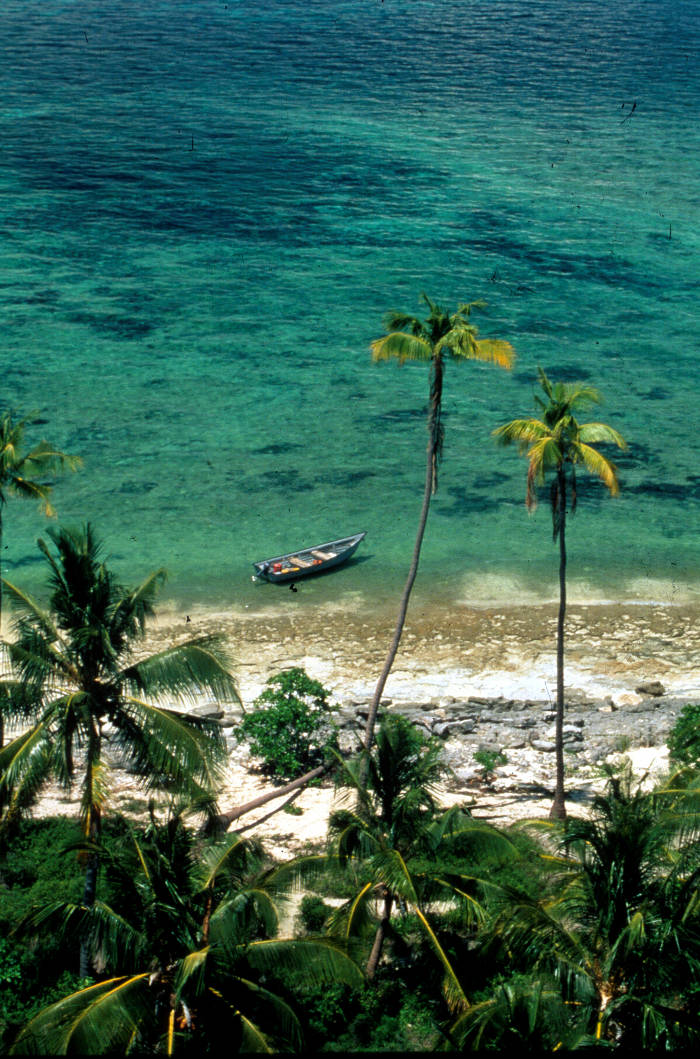
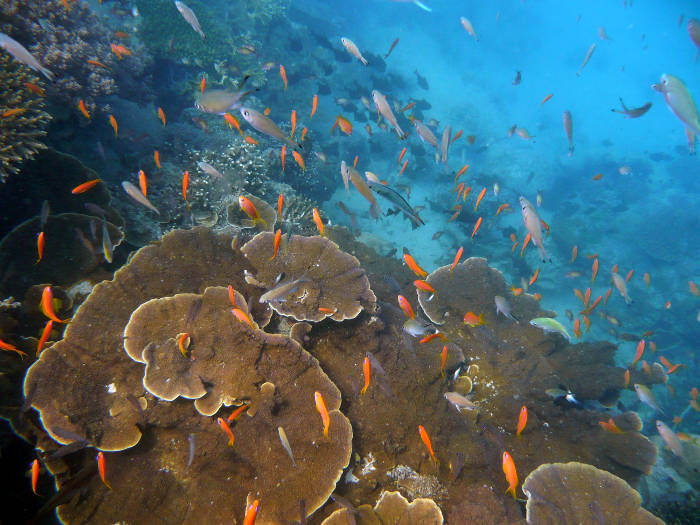
Chumbe island
Chumbe Island is off the west coast of Zanzibar. It has its own conservation area and is reputed to have one of the finest coral reefs in Africa, if not the world. There are seven Eco-cottages on the island, which have to be booked some time in advance.
A resourceful travel agent can locate vacancies on the island and you can go across for the day as a day visitor. The small boat that services the island departs from the Mbweni Beach at 10 am and returns at 4.30. The trip to the island, which can be quite choppy, takes 45 minutes.
On arrival, you are given a welcome, allocated an eco-hut, and introduced to the way the island is run, as a sustainable small-scale wildlife conservation area. You are given a forest walk, lunch, a stroll up to see the wonderful views over the island, and an hour-long snorkel trip from a small boat over the reef, which is about 5 minutes from the island base.
Remember, tide is important in Zanzibar. You should check the time of low tide: in our case it was in the morning, and the boat couldn't go out after we arrived, so the snorkel trip was in the afternoon, when visibility isn't quite so good. High tide in the morning after 10.45 would presumably mean the snorkel trip was before lunch, rather than after it.
Having said that, the reef is stunning, pristine, visibility about ten metres, drifting with the current over a wide-ranging picturesque series of corals with beautiful colours and large-sized fish. Two rangers go with you and are expert at finding and identifying fish. Absolutely stunning.
In addition to the list above, we saw:
Scribbled file fish Parrot fish Klunzinger's wrasse
Indian triggerfish Puffer fish Powder blue Surgeon Blackspot emperor Porcupine fish Regal angelfish
False-eye damsel Cleaner wrasse Blotchy shrimp goby
Lined butterflyfish
Slavery
It is almost impossible for us to imagine the scale of the slave trade in days gone by. At the time of the Domesday Book, 10% of the population of England were slaves. Slavery disappeared from Europe by the later Middle Ages, but slavers enthusiastically continued the trade, taking an estimated 12 million slaves from Africa to the New World. In Britain, we tend to gloss over the fact that the fortunes of Liverpool and Bristol came predominantly from the slave trade. Saudi Arabia abolished slavery only in 1962. It’s not a subject that is much discussed.
Zanzibar, to its credit, is open about its past. As part of the overseas holdings of the Sultan of Oman, the island was the major holding station for slaves along the east Coast of Africa, shipping 50,000 slaves a year from inland to work on the spice plantations in the island, or exported to Persia, Arabia, and Egypt. In the 19th century, Zanzibar was famous for its spices and its slaves - a trade that, ended, only reluctantly, in 1873 - though it appears that the trade continued for some time after that.
It is still possible to visit the slave-holding cells in Stone Town and other places. They are brutal and chilling.
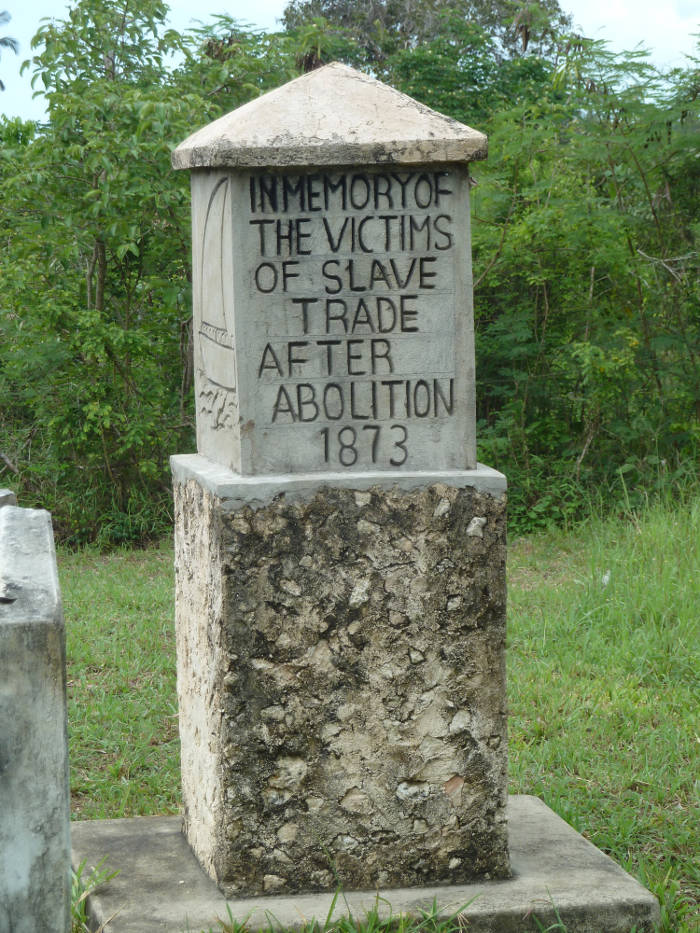
Would we recommend Zanzibar? Yes, absolutely - it's a beautiful island with great snorkelling. Remember that it's tidal, and choose your month carefully.

Usual warning: we have made every effort to make sure this information is correct and up-to-date, but you need to check it all yourself.
© Garreg Lwyd Ltd 2018
Do you have any comments, or recommendations? Send us a message! We'd love to hear from you...
